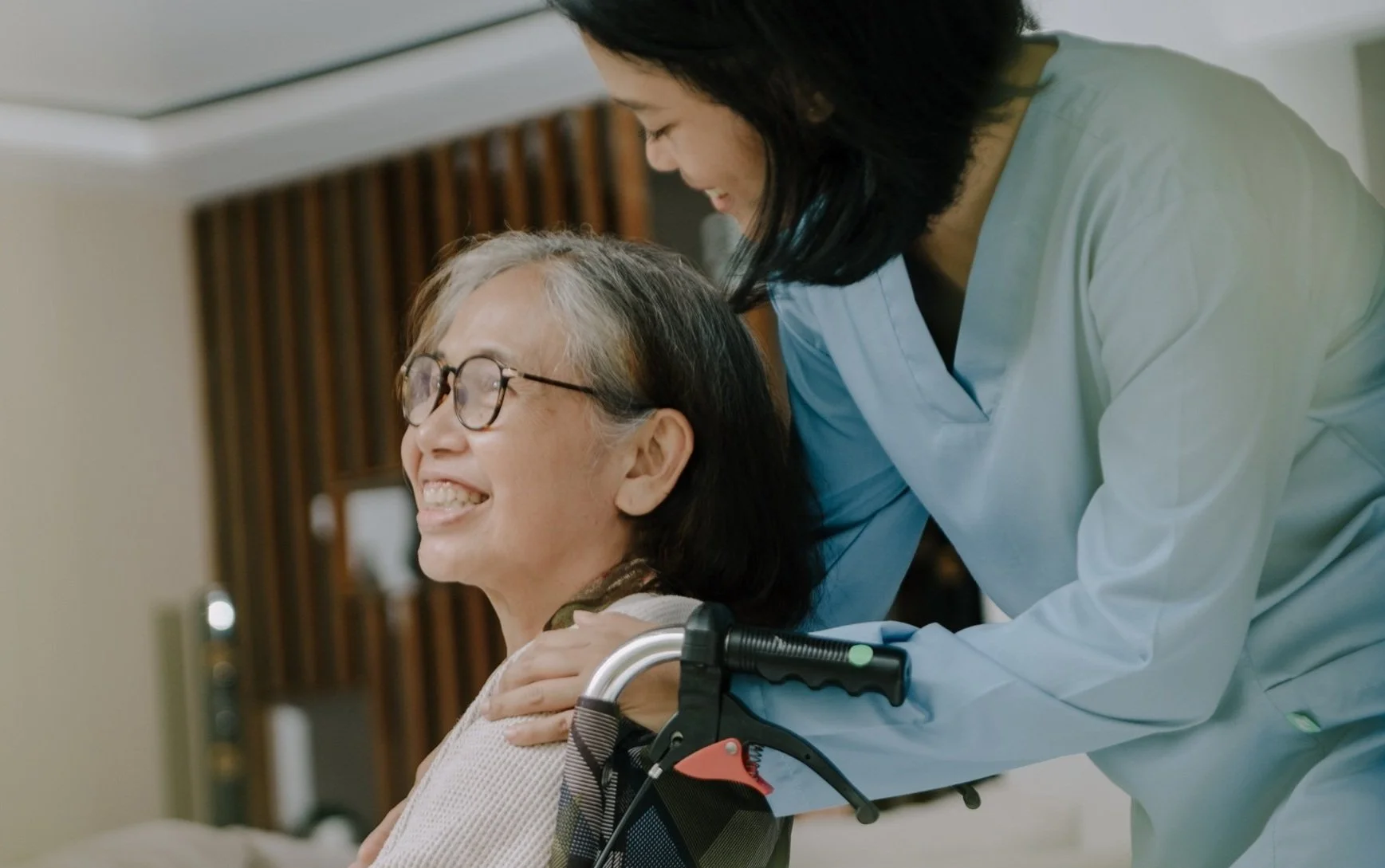The surprising emotional effect of color in design
Vibrant purple orchids catch my attention each morning as I enter my office. Nearly instantaneously, I become calm and focused. As it turns out, color does more for our subconscious than we realize.
If you think back to the last couple of rooms that you walked through, what do you remember? Stagnant white walls? Or do you recall patterns, changes in lighting, or brightly colored cushions?
How color affects each of us changes based on personal preference, experiences, and cultural background. If you were to ask friends their favorite color, their response would most likely differ from yours.
Color is made up of three parts:
Hue: Placement on the color wheel (percentage of red, blue, yellow, etc.)
Value: Lightness or darkness of the hue
Chroma: Saturation, or intensity of the hue
Research continues to uncover evidence of how varying color hue, value, and chroma promotes wellness. It’s especially interesting to see the relationship between color and improvements in health for senior living residents, particularly in memory care.
The design team at Pi Architects takes these core color principles and incorporates them into a beneficial wellness design.
Green promotes relaxing energy. According to Joshua J. Freitas in his book The Dementia Concept, "green can stimulate energy while also promoting relaxation.” He explains that green is also often one of the last colors lost when eyesight beings to fail. Incorporating greens and blues into the dining room at Heartis Arlington Memory Care creates a peaceful atmosphere for dementia residents that will remain bright and pleasing throughout their residency. These highly saturated tones also improve the visibility of the dining features and decrease glare from windows.
Blue calms the mind. “Painting a room blue can decrease confusion and increase concentration,” states Freitas. Blue tones in the therapy gym at S.P.J.S.T Senior Living empower residents to focus in sessions and allow them to take full advantage of time with therapists. Additionally, the light walls reflect more of the natural light back into the space, while the contrasting values of the floor and walls ease room navigation with aging eyesight.
Red increases appetite. The Dementia Concept concludes that the use of red in the dining room encourages residents to finish their meal. According to Small Business Trends, this same concept has been embraced by many fast food restaurants in the community at large. Although an overabundance of red has the potential to increase agitation, using a lower chroma of the red tone adds sophistication and avoids visual fatigue. Rustic red brick in the rendered bistro below enhances the theme while encouraging residents to enjoy a full meal over engaging conversations with friends.
Bold contrasting colors improve confidence. Contrasting hues and values allow for residents with visual impairment to better see objects and navigate their surroundings. "Design of residential environments for people with dementia and sight loss: a structured literature review" recommends to not shy away from the use of bold colors with strong contrasts, as it allows residents to better identify and distinguish objects, therefore increasing independence.
While strong contrast enables residents to better navigate spaces, if the contrast is used incorrectly, it could improperly distract and deter them. For example, a floor that suddenly changes hue or appears dark could turn residents away: they may perceive this as a barrier, not understanding that the area is clear and accessible.
In summary, these examples are a preview of the ways the elements of color can affect us. Each person brings in their own previous experiences and personality to the environment, thus creating a challenge when anticipating a human response. The need for additional studies specifically targeted toward how colors impact the aging community continues. However, existing research makes it possible to strategically incorporate these psychologically-charged colors within your community to create a unique palette that enhances the well-being of your residents.
References for additional information:
https://www.sciencedirect.com/science/article/pii/S1877042812003746
http://journals.sagepub.com/doi/abs/10.1177/0264619616653991
https://www.amazon.com/Dementia-Concept-Joshua-J-Freitas/dp/0692447350
https://smallbiztrends.com/2014/06/psychology-of-colors.html
Contact us here or call us at 512-231-1910.

















